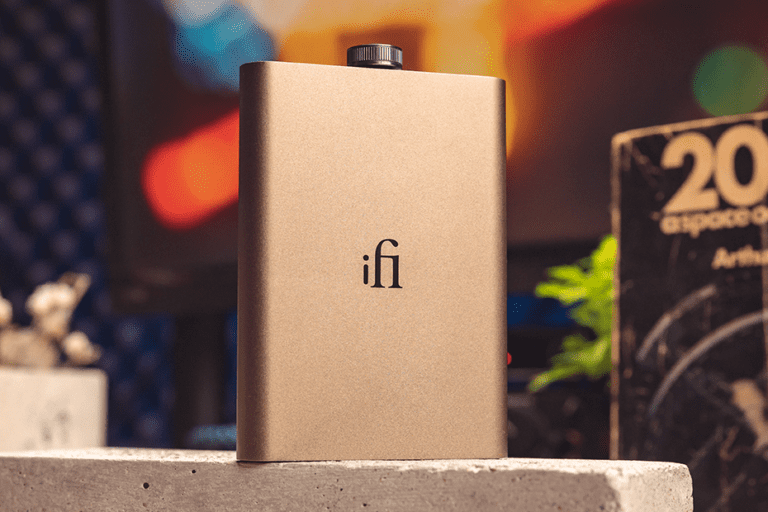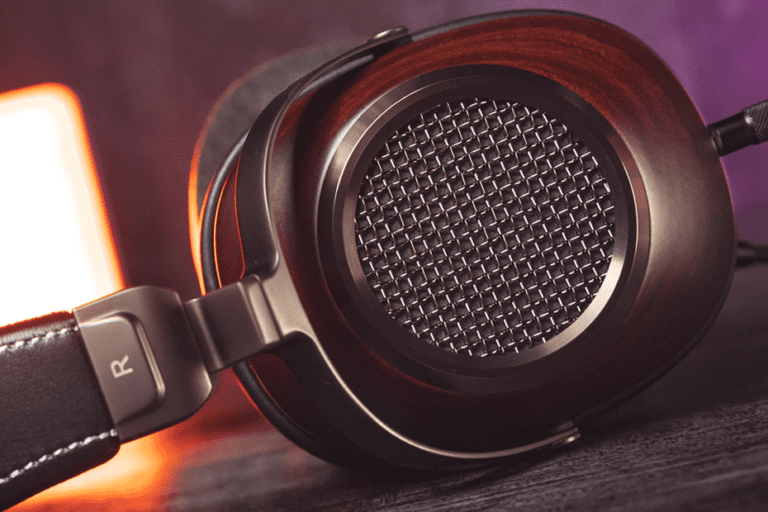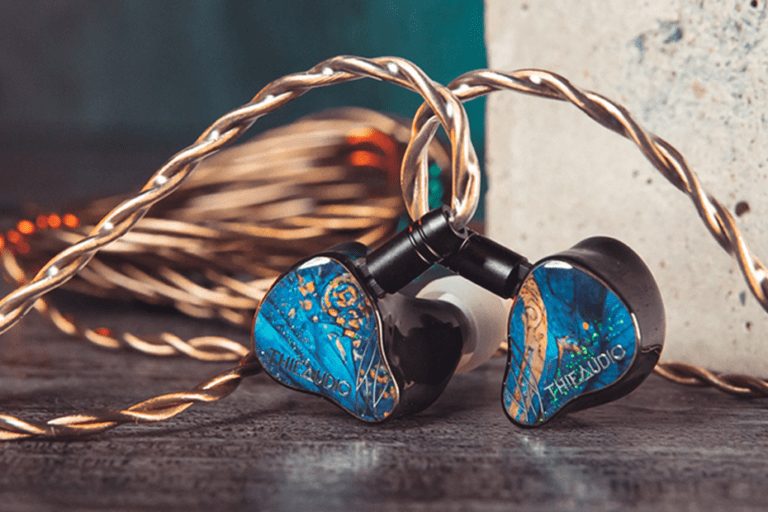In this review we take a look at the brand new iFi hip-dac 3 portable USB DAC/Amp.
I would like to thank iFi Audio for providing the sample for today’s review. No one paid me to make this review. I don’t offer any specific opinions about this product. And all thoughts expressed in this review are my own.
iFi hip-dac 3 is a fantastic little device. It’s based on the Burr-Brown True Native® chipset that supports PCM decoding up to 384khz at 32 bits and also DSD256, and MQA. It has a built-in battery, both 3.5 mm single-ended and 4.4 mm balanced headphone outputs, a lot of power, and very interesting onboard features. But as always we will start with the unboxing.
hip-dac 3 comes in a small carton box. There is an illustration of the DAC on the front of the box and a list of key features and technical specifications on the back.
Inside the box:
- iFi hip dac 3 portable DAC/AMP
- USB-C to USB-C cable
- USB-C to USB-A cable
- USB-C to Lightning cable
- 4 rubber feet that you can attach to the unit
- Quick start guide
- Warranty card
- User manual
- and an iFi sticker
iFi did a great job including all these cables in the package so now all of the popular platforms are covered. The iFi products stand out with their features, design & build and hip dac 3 is no exception.
🛒 iFi hip dac 3 on Amazon
Design & build
The body of the DAC is made from aluminum and it feels solid. Plus its matte finish not only looks good but also resists fingerprints. The first hip dac was tortoise, and the second hip dac was orange. The current model comes in a different paint called the Titanium Shadow. Out of all three revisions I like the color of hip dac 3 the most.
The length of this DAC/AMP is 102 mm and the width is 70 mm. The height of the DAC is 14mm and the unit weighs 135 g. The metal case gives hip dac 3 sturdiness and the ability to shield the device from external electromagnetic interference. In case you want to take additional steps to protect your device – you can purchase a faux leather case from iFi.
On the front of the DAC, there are power match and X bass buttons with LED indicators, an analog volume control knob that also acts as an On/off button, an audio format LED indicator, a 4.4 mm balanced output, and a 3.5 mm unbalanced output with the S-Balanced technology.
There is a USB-C data input port on the back of the device along with a Hi-Res sticker, a USB-C charging port, and a battery indicator.
On the top of the unit, there is an iFi logo and on the bottom of the unit, there is the IEmatch button.
The 3.5 mm output here uses a so-called S-Balanced technology that reduces the channel cross-talk. Please refer to the official iFi website if you are interested in how this technology works.

The LED around the volume knob changes the color according to the file format. The color schemes are explained in the quick-start guide but here it is just in case. I’m a big fan of color indication, so this approach resonates with me. Overall, the unit feels solid in hand and I’m pleased with the build, product design, and choice of materials.
Technical specifications & functionality
Regarding technical specs, THD+N (@1kHz) (A-WT): is less than 0.006%, SNR: 109 dB, and Dynamic Range: 109 db. According to the specs, the maximum output power is 280mW @ 32Ω at 3.5mm output and up to 400mW @ 32Ω for the balanced output. These are very impressive figures, and hip dac 3 has enough power for many full-size headphones, let alone the IEMs. In addition, the device comes with the iFi in-house sound signature which I’m a big fan of.
I was mainly testing iFi hip dac 3 with my old and trusty Samsung Galaxy S10 that runs on Android 12. I used FLAC and DSD files with USB Audio Player PRO and also Apple Music and Tidal for lossless streaming. Setting up the hip dac 3 was a breeze. You just plug it in, turn it on, connect your headphones, and you’re ready to go.
The capacity of the built-in battery is 2200mAh which according to the manual should last up to 12 hours. This was enough to carry me through a full day of listening and had some battery left for the next day too.
Now a few words about buttons and switches
The PowerMatch button is a gain switch that helps to match hip dac 3 to the impedance and sensitivity of your IEMs or headphones. With the switch engaged, you are getting an additional +10 dB of gain.
The iFi recommends using Low-gain mode (Power match off) for IEMs and hi-gain mode (power match engaged) with full-size headphones. In the case of very sensitive IEMs, you can also engage the iEMatch switch which we will cover in a minute.
The XBass button is a bass shelf, and it’s really fun to use, especially with the headphones that have a lean and neutral bass response. It is an analog EQ designed to compensate for the lack of low frequencies with some of the headphones. And it makes any bass-light headphones sound more engaging.
The iEMatch switch located on the bottom of the DAC allows you to further reduce the output gain for a more comfortable experience with very sensitive IEMs. As a result, it also increases a volume knob’s range of motion.
Due to the high output power of hip-dac 3, it’s always recommended to start with low volume levels to avoid the risk of damaging both your hearing and your headphones.
There are also a few versions of firmware available for hip dac 3, 7.4 (MQA), 7.4b (No MQA), and 7.4c (MQA, GTO filter). I’m not an MQA user, still, I didn’t bother changing the firmware and so I have done all the tests with the version 7.4
iFi hip dac 3 pairings & sound impressions
Talking about power, according to the specs, the maximum output power is 280mW @ 32Ω at 3.5mm output and up to 400mW @ 32Ω for the balanced output. With all of my IEMs, I have exclusively run the unit in the low-gain mode and I rarely increased the volume past 1 PM.
This means hip-dac 3 can drive probably all of the IEMs on the market today. At the same time, I didn’t notice any audible distortion or noise with sensitive IEMs which is good. And this is exactly what you should expect from a quality DAC/AMP.
The next important aspect for me was how it would drive my full-size headphones. I tried it with dozen full-size headphones I had at hand while making this review. You can see the list of headphones I used in this test below. Additionally, I have also included information about their impedance and sensitivity to give you an idea of how powerful the hip dac 3 is.

All full-size headphones have been tested using the hi-gain mode (PowerMatch button engaged) and 3.5mm single-ended output (as some of my headphones don’t support a balanced connection and I wanted to see a fair comparison). Though with some headphones in this list even the low-gain mode provided enough power.
The hip dac 3 has shown fantastic results and has driven all the pairs with ease. In addition, it paired especially well with neutral and neutral bright sounding headphones, and I had some fun with the XBass button too.
I didn’t even bother with the balanced cables, as the 3.5mm output in high-gain mode had enough power and headroom to drive all pairs on this list. However, if I need even more power and headroom, I can always use a 4.4mm balanced connection.
Enjoying this review? Read more DAC/AMP reviews here
I also need to mention that I don’t believe that DACs can have a significant impact on the sound. However, the amplifier section of the DAC can still introduce some changes to the sound. To me the hip-dac 3 sounds musical and warm. At the same time, It’s quite resolving and has a solid black background which I appreciate.
In my opinion, the hip-dac 3 is an ideal companion for the headphones and IEMs in the 16-300 Ohm range. To me, it strikes the perfect balance between price, performance, and output power in a portable form factor. With all the features and flexibility it brings to the table, I think it’s an amazing portable DAC/AMP.
hip dac 3 vs hip dac 2
As we talk about hip-dac 3, I think it also makes sense to mention its predecessor, the hip-dac 2. As there have been a few changes in hip dac 3 compared to the hip dac 2.
First is the introduction of a USB-C input port. While the female USB-A port on hip dac 2 is still more robust in my opinion, the introduction of the unified ports is still a good thing.
Second, is the addition of the IEmatch switch, a circuit designed to optimize the amp’s output power to suit very sensitive headphones and in-ear monitors better. This also helps to increase the range of motion of the volume knob with very sensitive IEMs.
In addition, there have been some circuit refinements, including the new metal film capacitors and updated GMT circuitry with a new crystal oscillator to reduce phase noise.
Conclusions
Pros
- Excellent design and a good build
- S-Balanced 3.5mm connection
- Built-in 2200mAh battery
- USB-A, USB-C, and Lightning cables are included in the package
- There is enough power to drive a lot of full-size headphones, let alone the IEMs
- It has two gain modes and an IEmatch button to help with very sensitive IEMs
- Xbass button to bring some more excitement
- And a musical and warm sound signature
Cons
Well, I don’t think this unit has any real cons. But if you want me to be very picky, I’d say that the volume wheel milling could be slightly better. I would also like to see the volume guard to secure the volume wheel while the DAC is in your pocket. But that’s a mere nothing.
All in all hip-dac 3 is an amazing device and it made me question my collection of dongles. I have also found that I was using it a lot in a desktop scenario too. As it has a separate USB-C charging port, you can use it while charging. This also helps to preserve a pure audio signal path.
iFi hip-dac 3 packs many features and has a lot of power in such a small and stylish form factor. In addition, it also doesn’t drain the battery of your source. All of which makes it a perfect device in my case. I can absolutely recommend hip dac 3, especially if you are in the market looking for a battery-powered portable DAC/AMP with an impressive power rating and a musical sound signature.
🛒 iFi hip dac 3 on Amazon
And that concludes my review for today. If you’d like to see more content like this, consider subscribing to my YouTube channel for future updates. Thank you for joining me, and until next time, goodbye!
** As an Amazon Associate I earn from qualifying purchases. Some of the links in my reviews are affiliate links. At no extra cost to you, I will make a small commission if you click and make a qualifying purchase.



